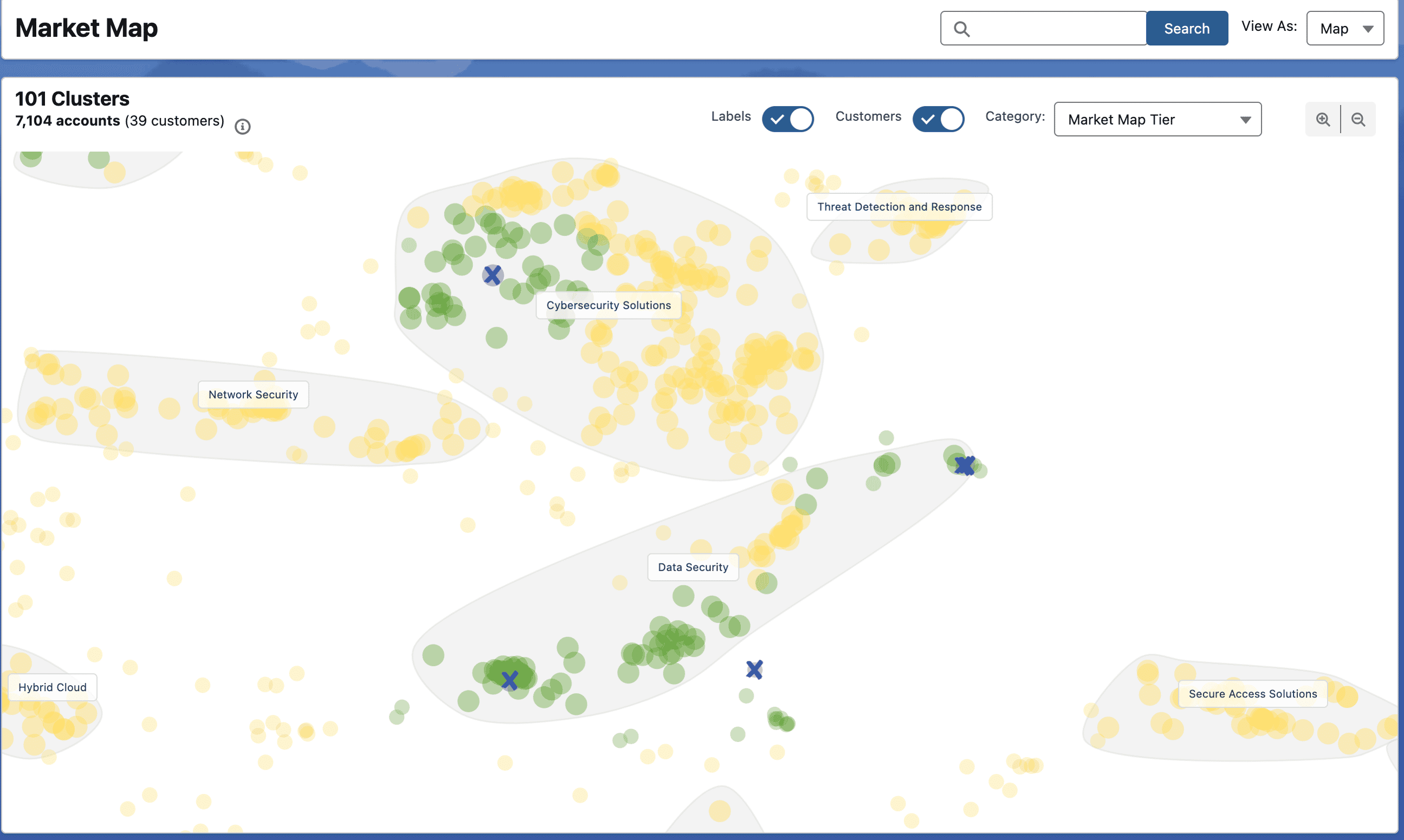B2B sales teams have long relied on industry classification as a way of quickly segmenting potential prospects.
In particular, companies have used Standard Industrial Classification (SIC) and North American Industry Classification System (NAICS) for industry categorization, providing a framework for businesses to be classified based on their primary activities.
For B2B companies that sell to other businesses - like most of you reading this - SIC and NAICS codes have long been the “best” way to quickly identify whether or not a prospect company could be a good fit for your ICP based on their industry or vertical. But finally there's a better way to identify a prospect's industry in a way that actually helps determine their potential as a future customer.
1. A quick history of industry classification
First, let’s spend just a minute talking about how and why these classifications were developed to begin with.
SIC codes were first developed in 1937 by the US government to systematically dissect economic activity across various industries for the first time. The system was revised from time to time as new industries emerged, with its last major update in 1987.
Fast forward to the 1990s, and the business landscape had evolved so much that NAICS codes were developed in 1997. (Though it’s worth noting that some US government agencies still used SIC codes as recently as 2019.) NAICS was a collaborative effort between the United States, Canada and Mexico, and included more than over 1,000 industry codes.
Yet, despite their foundational role, both SIC and NAICS codes aren't particularly relevant for useful industry classification now. Here’s why:
-
Digital transformation: The digital economy has upended traditional industry lines. Companies like Amazon and Google blur the boundaries between retail, technology, and media, with operations that don’t fit neatly into the one-size-fits-all classifications of SIC or NAICS codes.
-
Innovation and new industries: Emerging industries like biotech and renewable energy, as well as more mature industries like SaaS, transcend traditional sector definitions. The relentless pace of technological change often leaves classification systems scrambling to keep up, making it tough to accurately capture and categorize these fields.
-
Globalization: The modern global economy complicates the North American-centric perspective of NAICS codes. With companies spread across multiple countries, the regional focus can hamper comprehensive global economic analysis.
-
Data-driven decision making: With the rise of big data and artificial intelligence, granular, real-time insights often outperform the broad industry categories provided by SIC and NAICS codes. Static systems can't keep pace with the speed of business innovation, hampering analysis and strategic decisions. More on this in a second.
2. Why do B2B sales teams care about industry anyway?
To narrow their focus to a realistic set of high-potential prospects, B2B sales teams segment the universe of other businesses into a set that match their ideal customer profile (ICP). (More on creating a great ICP definition here.)
Most B2B segmentation starts with four main criteria to help teams narrow down the universe of potential prospects. Those include:
-
Revenue
-
Location
-
Industry or vertical
-
Employee count
But we all know these criteria are broad, directional strokes at best.
For example, revenue and employee count are rough estimates of a company’s size, which tell us something about its maturity, which then tells us something about its challenges and pain points. A 20-person startup with $1 million in annual revenue has far different business challenges than a 4000-person company with $1 billion in revenue. To sell to them effectively, we need to address their specific challenges.
Location typically only matters in a general sense to help teams figure out who they can sell to and which reps should handle outreach. Is a prospect located in a particular country or region? That helps us know what language, time zone, and cultural implications we need to take into consideration during the sales process.
But as we’ve said many times, detailed geographic criteria such as state or zip code is a terrible way to segment accounts. Opportunity is not distributed geographically. Why? With geographic segmentation, some reps get territories with so many high-potential accounts they can’t talk to them all, while other reps starve in a territory plan with low potential.
So ultimately, beyond some high-level regional considerations, geographic segmentation is not a particularly useful way to segment accounts.
That leaves us with the fourth category: industry. Typically, we tend to cluster prospects into industry or vertical categories - software, automotive, healthcare, and so on. This helps us understand how to sell more efficiently. If we sell to a group of companies in the same industry, we can use the same talking points and messaging since we can assume they share a set of similar challenges.
This is where NAICS and SIC codes come into play. Some companies use these codes to segment companies into industry groups. Those broad strokes are moderately useful, but would be far more useful if they were more specific, for the reasons we explained above.
So what should B2B sales teams use instead of old school NAICS and SIC codes to understand what kind of company a prospect is? We have some thoughts.
3. There’s a better way to classify a company’s industry
Okay, so we all agree that current ways of classifying industry data are vague and only directional in scoring an account's potential. That also means that existing data enrichment tools that use predetermined industry categories to do a top-down analysis to classify companies (which is basically of them) provide results that are too broad to be very useful.
We've taken a different approach at Gradient Works with Market Map. Market Map uses an AI-driven inductive method to classify a company's industry, resulting in a more specific and more tailored analysis of a company’s industry.
Here's how it works. Market Map analyzes every account in your CRM and forms your existing accounts into clusters of similar ones based on how those companies describe themselves, generating concrete industry categories that are far more useful than generalized industry classification. The analysis is built around your prospects and your customers.
Let's look at an example of how traditional industry classification compares to the inductive AI approach we take. In this example, we'll assume your ICP is software companies with more than 100 employees headquartered in the US and Canada.
Zoominfo lists 339,506 companies in the Software industry. That's way too many accounts to target, no matter how big your sales team is. Narrowing down to just those based in the US and Canada with more than 100 employees still leaves 9,839 accounts. Because this industry data is so vague, it adds limited value to an account score and certainly doesn't actually tell you which specific accounts to prioritize.
Because Market Map uses a bottoms-up approach to industry classifications based on how companies actually describe themselves (compared to a top-down categorization based on outdated categories), Market Map's industry groupings are very precise and can provide more value to an account score by indicating how closely related an account's very specific industry is to existing customers, giving you a much more accurate overall score.
For example, in Market Map, you may find that your customers are in specific software microsegments, like employee experience platforms or property management software. Those smaller segments tell you a lot more about an account's actual industry, and is far more effective at indicating potential.
When segmenting companies by industry category, you want to think about accuracy (does a category even describe what a company does) and precision (how does this category help me identify specific, relevant targets). Overly broad classifications are bad at both, so they're not particularly helpful to prioritize the best accounts to target.
For more about this, read our free guide to account segmentation and prioritization.





